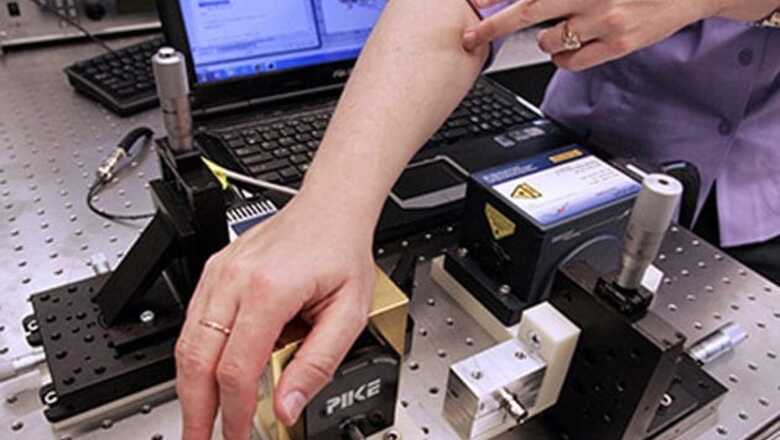
views
Washington: Researchers have used a specialised laser to measure blood sugar, an advance that could allow diabetics to check their condition without pricking themselves to draw blood.
Princeton University researchers have measured blood sugar by directing a specialised laser at a person's palm. The laser passes through the skin cells, without causing damage, and is partially absorbed by the sugar molecules in the patient's body. The researchers use the amount of absorption to measure the level of blood sugar.
"We are working hard to turn engineering solutions into useful tools for people to use in their daily lives," said Claire Gmachl, the Eugene Higgins Professor of Electrical Engineering and the project's senior researcher. "With this work we hope to improve the lives of many diabetes sufferers who depend on frequent blood glucose monitoring," Gmachl said.
Sabbir Liakat, a graduate student in electrical engineering and the paper's lead author, said the team was pleasantly surprised at the accuracy of the method.
Glucose monitors are required to produce a blood-sugar reading within 20 per cent of the patient's actual level; even an early version of the system met that standard. The current version is 84 per cent accurate, Liakat said.
To conduct their experiment, the researchers used a quantum cascade laser to measure the blood sugar of three healthy people before and after they each ate 20 jellybeans, which raise blood sugar levels.
The researchers also checked the measurements with a finger-prick test. They conducted the measurements repeatedly over several weeks.
The researchers said their results indicated that the laser measurements readings produced average errors somewhat larger than the standard blood sugar monitors, but remained within the clinical requirement for accuracy.
"Because the quantum cascade laser can be designed to emit light across a very wide wavelength range, its usability is not just for glucose detection, but could conceivably be used for other medical sensing and monitoring applications," Gmachl said.
The study was published in the journal Biomedical Optics Express.



















Comments
0 comment